Cuixian Chen
A Comparison Study on Nonlinear Dimension Reduction Methods with Kernel Variations: Visualization, Optimization and Classification
Oct 04, 2019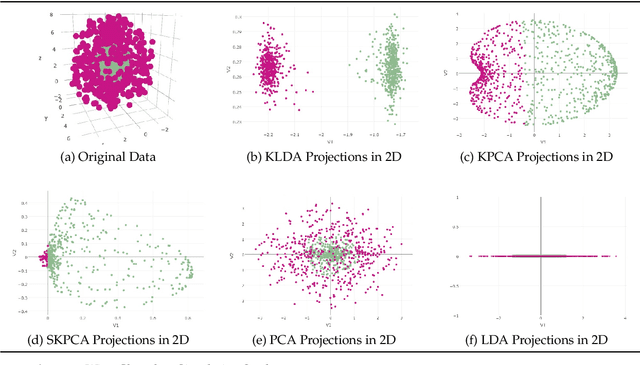
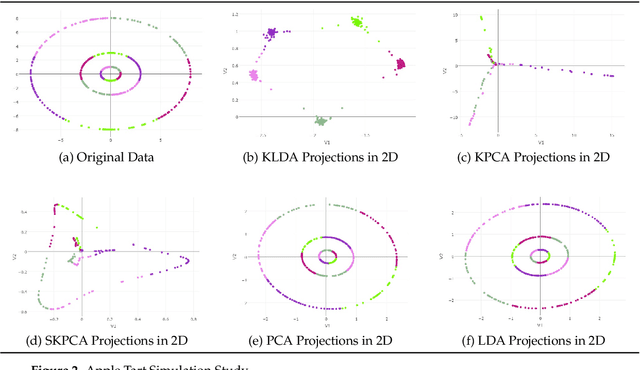


Abstract:Because of high dimensionality, correlation among covariates, and noise contained in data, dimension reduction (DR) techniques are often employed to the application of machine learning algorithms. Principal Component Analysis (PCA), Linear Discriminant Analysis (LDA), and their kernel variants (KPCA, KLDA) are among the most popular DR methods. Recently, Supervised Kernel Principal Component Analysis (SKPCA) has been shown as another successful alternative. In this paper, brief reviews of these popular techniques are presented first. We then conduct a comparative performance study based on three simulated datasets, after which the performance of the techniques are evaluated through application to a pattern recognition problem in face image analysis. The gender classification problem is considered on MORPH-II and FG-NET, two popular longitudinal face aging databases. Several feature extraction methods are used, including biologically-inspired features (BIF), local binary patterns (LBP), histogram of oriented gradients (HOG), and the Active Appearance Model (AAM). After applications of DR methods, a linear support vector machine (SVM) is deployed with gender classification accuracy rates exceeding 95% on MORPH-II, competitive with benchmark results. A parallel computational approach is also proposed, attaining faster processing speeds and similar recognition rates on MORPH-II. Our computational approach can be applied to practical gender classification systems and generalized to other face analysis tasks, such as race classification and age prediction.
Transfer Learning with Deep CNNs for Gender Recognition and Age Estimation
Nov 18, 2018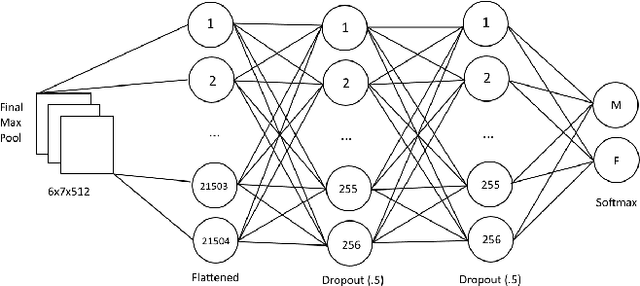



Abstract:In this project, competition-winning deep neural networks with pretrained weights are used for image-based gender recognition and age estimation. Transfer learning is explored using both VGG19 and VGGFace pretrained models by testing the effects of changes in various design schemes and training parameters in order to improve prediction accuracy. Training techniques such as input standardization, data augmentation, and label distribution age encoding are compared. Finally, a hierarchy of deep CNNs is tested that first classifies subjects by gender, and then uses separate male and female age models to predict age. A gender recognition accuracy of 98.7% and an MAE of 4.1 years is achieved. This paper shows that, with proper training techniques, good results can be obtained by retasking existing convolutional filters towards a new purpose.
Image Pre-processing Using OpenCV Library on MORPH-II Face Database
Nov 16, 2018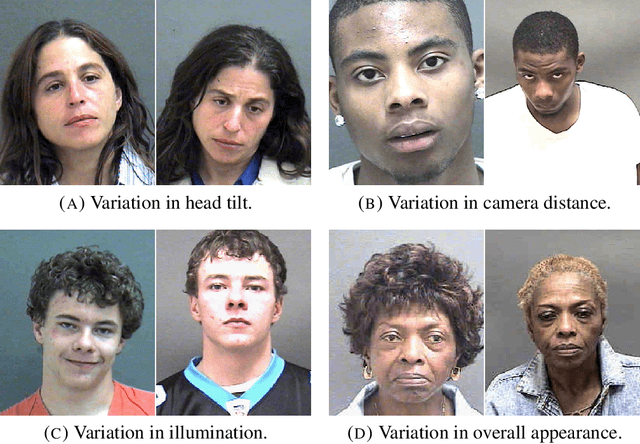
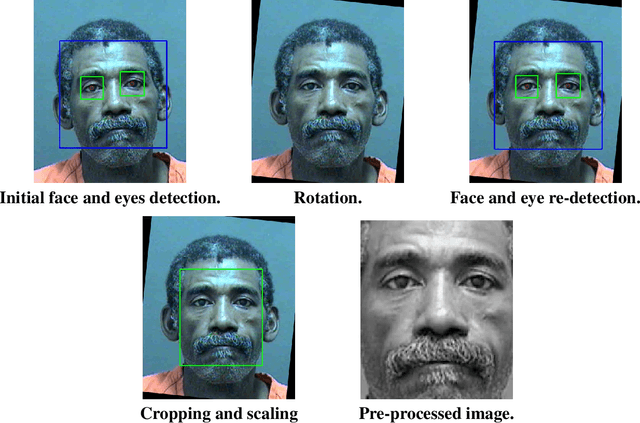
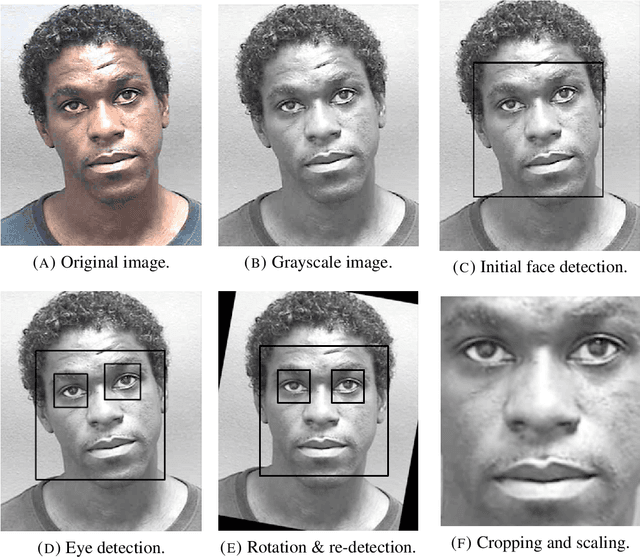

Abstract:This paper outlines the steps taken toward pre-processing the 55,134 images of the MORPH-II non-commercial dataset. Following the introduction, section two begins with an overview of each step in the pre-processing pipeline. Section three expands upon each stage of the process and includes details on all calculations made, by providing the OpenCV functionality paired with each step. The last portion of this paper discusses the potential improvements to this pre-processing pipeline that became apparent in retrospect.
Preliminary Studies on a Large Face Database
Nov 15, 2018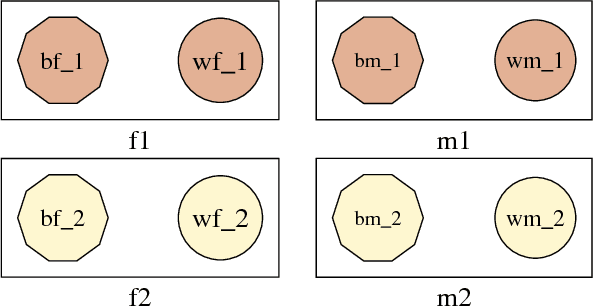
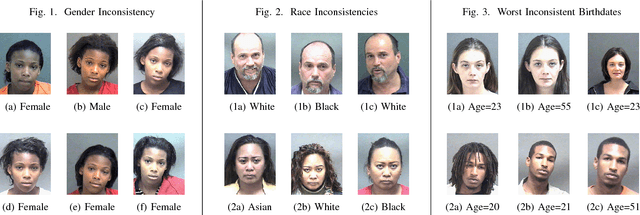
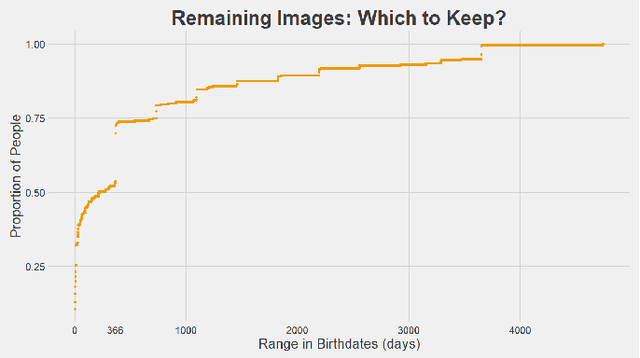
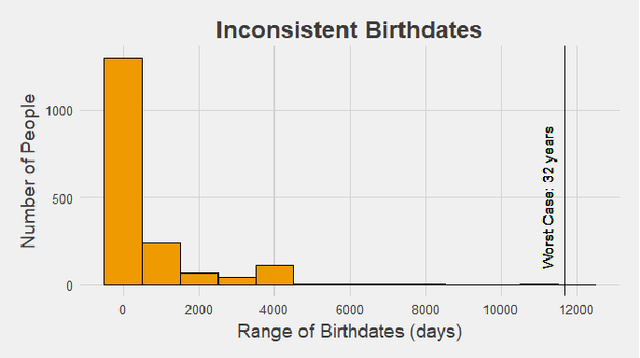
Abstract:We perform preliminary studies on a large longitudinal face database MORPH-II, which is a benchmark dataset in the field of computer vision and pattern recognition. First, we summarize the inconsistencies in the dataset and introduce the steps and strategy taken for cleaning. The potential implications of these inconsistencies on prior research are introduced. Next, we propose a new automatic subsetting scheme for evaluation protocol. It is intended to overcome the unbalanced racial and gender distributions of MORPH-II, while ensuring independence between training and testing sets. Finally, we contribute a novel global framework for age estimation that utilizes posterior probabilities from the race classification step to compute a racecomposite age estimate. Preliminary experimental results on MORPH-II are presented.
Gender Effect on Face Recognition for a Large Longitudinal Database
Nov 08, 2018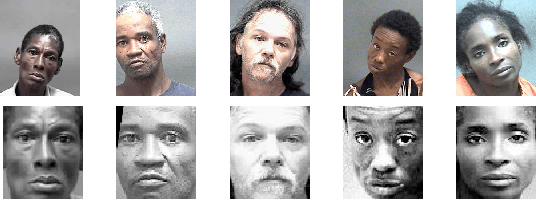
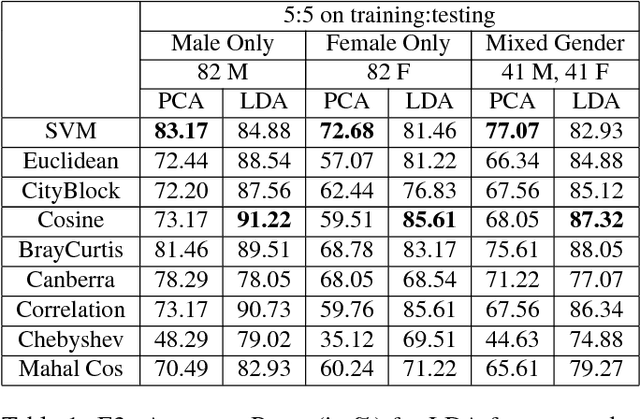
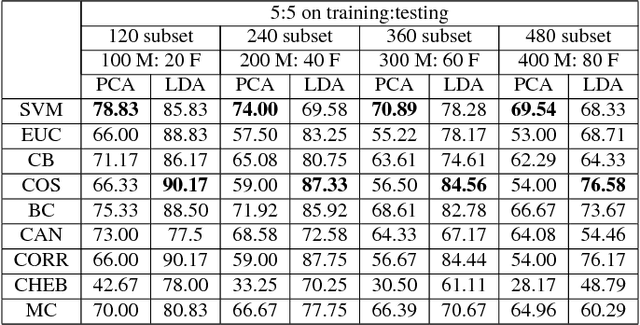
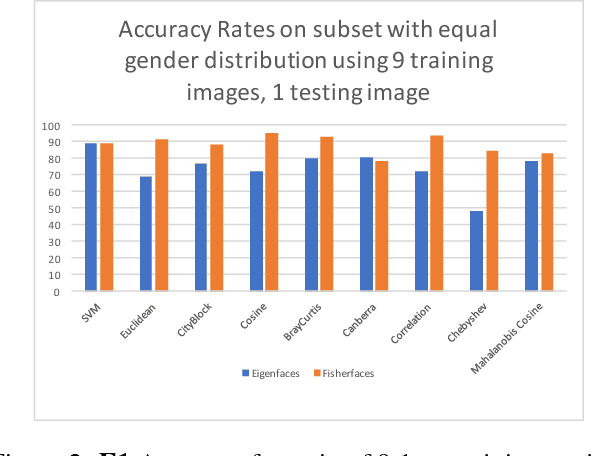
Abstract:Aging or gender variation can affect the face recognition performance dramatically. While most of the face recognition studies are focused on the variation of pose, illumination and expression, it is important to consider the influence of gender effect and how to design an effective matching framework. In this paper, we address these problems on a very large longitudinal database MORPH-II which contains 55,134 face images of 13,617 individuals. First, we consider four comprehensive experiments with different combination of gender distribution and subset size, including: 1) equal gender distribution; 2) a large highly unbalanced gender distribution; 3) consider different gender combinations, such as male only, female only, or mixed gender; and 4) the effect of subset size in terms of number of individuals. Second, we consider eight nearest neighbor distance metrics and also Support Vector Machine (SVM) for classifiers and test the effect of different classifiers. Last, we consider different fusion techniques for an effective matching framework to improve the recognition performance.
 Add to Chrome
Add to Chrome Add to Firefox
Add to Firefox Add to Edge
Add to Edge